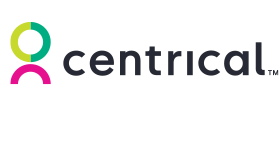Quality management processes have been reactionary and disconnected for too long. It’s time to change that – read more to learn how.
“Our quality management processes are disconnected. Agents must go to too many places to understand how they are doing.”
“Supervisors and managers are spending too much time trying to understand where agents need support – and can’t take quick action.”
“Quality is critical to customer retention and minimizing service penalties, but we don’t have an easy way to manage it.”
Does any of this sound familiar? It just might – these are some of the comments we hear from BPO and contact centre leaders when it comes to quality assurance processes.
There is no question that effective quality monitoring practices are integral to driving customer satisfaction and retention.
But the process has largely been transactional, reactionary, disconnected, and painstakingly tedious for everyone involved, which minimizes its value and impact.
But it doesn’t have to be this way. There is technology that can improve the process for quality assurance managers, as well as supervisors, agents, and operations leaders. We are taking quality assurance to a new level, making the process dynamic, personalized, actionable, and gamified, so that organizations can reap the full benefit that effective quality assurance programs bring. And because it’s part of a holistic solution for managing the employee performance experience, the impact extends further than traditional programs.
The Traditional QM Processes
The quality monitoring evaluation process and scoring serve as a diagnostic tool to help determine areas for skills improvement, compliance adherence, and determine training opportunities.
The quality assurance manager evaluates agents’ interactions with customers and sends the scores to the supervisor. Ideally, the supervisor takes the scores and speaks to the employee, giving needed coaching and training. This ultimately boosts customer retention and satisfaction.
Sounds good, right?
Well, in theory, yes. But as we said above, the traditional way of quality management is riddled with issues.
A Static Process
The process of monitoring, evaluating, and sharing scores is often transactional, point A to point B passing of information, with no recommendations, action items, or guidance.
Supervisors ideally will use the information and coach the employee. But this is usually one-directional, with no place for discussion about the QM manager’s findings, contextual rationale, or really, any type of feedback loop. When feedback is provided, disputes and calibration processes are time-consuming.
A One-Size-Fits-All Approach
Evaluation forms tend to be standard forms, with one structure following a uniform set of protocols and guidelines.
For instance, a new hire (potentially also new to the industry) will be held to the same standards as a veteran agent. Conversely, that veteran agent is potentially being monitored with the same frequency as the new hire.
Lack of Transparency
Employees will often have no insight into the findings of their quality assurance monitoring until they have a scheduled coaching session with their supervisor.
This coaching session might not go in the right direction if the supervisor doesn’t have a holistic, contextual view of the opportunity areas or any guidance on recommending actionable next steps. Additionally, these coaching sessions could be scheduled weeks out.
When coaching isn’t delivered right away, this can result in agents repeating mistakes and prolonging issues until they are addressed.
Discord and Disconnect
Quality management evaluations can live anywhere, and it can be difficult for an agent to proactively examine their own scores and understand where they need improvement.
These evaluations also lack context and root causes, such as training gaps (e.g., explaining why an agent continually puts customers on hold).
Additionally, when there is no transparency in scoring, they might consider their score to be unfair, leaving them feeling defeated, disengaged, and unmotivated. When this happens too much, it can contribute to a negative impact on engagement and ultimately contribute to already-high attrition rates.
A Transactional Day for Quality Assurance Managers
The quality assurance manager’s day can be on the tough and tedious side. Analysts tend to evaluate, note, and submit (then lather, rinse, repeat) in a vacuum.
Transactional, reactive processes and the lack of a feedback loop and intrinsic and extrinsic motivators can lead to boredom and derail motivation and engagement.
The Modern Quality Management Experience
We take a modern approach to quality monitoring and evaluations to better engage quality assurance managers, supervisors, and agents in a continuous feedback loop that drives continuous improvement. The process is dynamic, proactive, personalized, actionable, and gamified.
Our approach to quality management is also integrated as part of a holistic employee performance experience that supports real-time coaching and performance management, adaptive microlearning, voice of the employee and other strategies that drive both EX and CX.
An Evolved Evaluation Form
Evaluation forms will always be a part of the process, but using the right form is key. Our approach enables QM managers to ditch the standard approach and support their clients and processes across channels with customizable, scalable forms. Quality assurance managers have a number of options available, including:
- Providing different question types, such as multiple-choice and paragraph questions (which include rich text so links can be added)
- Defining quality criteria per process
- Assigning actions at a category level within the evaluation
- Displaying a grade
- Defining an automatic failure
- Determining which questions are mandatory
- Adding fields for supervisor and agent comments
- Identify the root cause contributing to an employee’s performance
- Engage QA managers/evaluators with gamification and evaluation KPIs
- Uncover recognition opportunities as part of the process (e.g., assign badges, give kudos)
Quality assurance managers may also add instructions and guidelines for evaluators on the forms that include guidelines to follow when scoring. This helps ensure consistency between evaluators and supervisors and minimizes disputes.
Standardized forms also enable better quality assurance tracking later on when looking for common (and critical) errors. Evaluations are also editable, which helps with the feedback loop after supervisors and agents have a post-evaluation coaching session, which we’ll go into.
Personalization and Scale
The Centrical platform enables smart segmentation, which takes into account employees’ tenure, performance history, knowledge, and other criteria to ensure the proper cadence of evaluations.
This tailored approach gives a better idea of evaluation expectations and monitor cadence – and can be customized across various clients in the BPO setting.
This way, employees are monitored at an appropriate cadence (e.g. twice a week for new hires and twice a month for longer-term employees). Agents are also scored on relevant areas, enabling better coaching and training recommendations.
Transparency
Identifying the root cause of errors and failure is essential to help agents improve. But the process can be cumbersome. Our approach enables better, more efficient analysis to identify common issues and recommend the best, most appropriate training and coaching.
When the form is submitted by the evaluator, the supervisor and agent will not only be able to see the score but also the rationale behind it – which leads to more productive coaching and targeted training.
Let’s say that Amy, a customer service agent, received a lower score on her evaluation and failed an area. Amy’s supervisor speaks with her, and the discussion reveals the context around the errors and the root cause behind the failure.
Amy’s supervisor can edit the evaluation, remove the failure, and add comments. The supervisor then recommends the training that Amy needs and sends that microlearning module automatically.
This “single pane of glass” approach is inclusive, integrated, and lends itself to constructive, productive discussions and better outcomes.
A Gamified Approach
Quality assurance managers like to have fun like everyone else! A gamified approach helps to alleviate the tedious, transactional, and disconnected nature of the role.
Like agents, quality assurance managers can turn their work into a game, with KPIs for completing required evaluations that can earn them redeemable points, to keep them motivated and engaged.
Software as a QM Partner
QM is a critical element for any large organization, especially in BPOs and enterprise contact centres. While the process typically measures internal factors, such as compliance and regulatory adherence, the ultimate outcome is to provide an outstanding customer experience and to retain customers.
To optimize the full value that quality management can provide to the overall organization and its customers, the process must be personalized, dynamic, integrated, and actionable. Below is a quick recap of how a platform enables this:
The QM Team: Personalizing and Scaling
- One Size Doesn’t Fit All. Operations leaders can ditch the standard forms for customizable, easy-to-build forms that evolve with business needs.
- Striking the Right Balance. Provide the right level of quality monitoring and the best cadence for evaluations with smart segmentation, which is based on variables, such as tenure, performance, knowledge, past scores, etc.
- Motivated Monitoring. With automation and gamification, the job of a quality assurance manager is now more motivating, engaging, and enjoyable.
Supervisors: Driving Greater Coaching Impact
- Pinpoint the Pain Point. Supervisors now have greater transparency into quality scores for coaching and recognition opportunities.
- Feeding the Feedback Loop. Supervisors can more easily provide targeted, contextual, and personalized feedback based on the attributes of employee performance.
- Efficiency. Guided feedback and recommendations based on protocols and best practices help supervisors save time and makes coaching more impactful.
Employees: Ownership of Success
- A Clear View. Employees will have real-time visibility into their evaluation scores, and transparency around opportunity areas for professional and self-improvement, which are also connected to targeted learning opportunities.
- Motivation for Improvement. Employees will also receive rewards and recognition for improvement in those areas.
Operations: Discovery and Risk Mitigation
- Finding the Common Denominator. Operations teams can better uncover common training and development needs, as well as common customer complaints and issues.
- Reducing Risk. Operations teams are also now better equipped to identify (and mitigate) compliance issues.
This blog post has been re-published by kind permission of Centrical – View the Original Article
For more information about Centrical - visit the Centrical Website
Call Centre Helper is not responsible for the content of these guest blog posts. The opinions expressed in this article are those of the author, and do not necessarily reflect those of Call Centre Helper.
Author: Centrical
Published On: 22nd May 2023
Read more about - Guest Blogs, Centrical






 Centrical provides a real-time performance management, microlearning, gamification, coaching, and voice of the employee platform for frontline teams. The solution inspires and personally guides employee success and growth by making every moment actionable.
Centrical provides a real-time performance management, microlearning, gamification, coaching, and voice of the employee platform for frontline teams. The solution inspires and personally guides employee success and growth by making every moment actionable. 






























